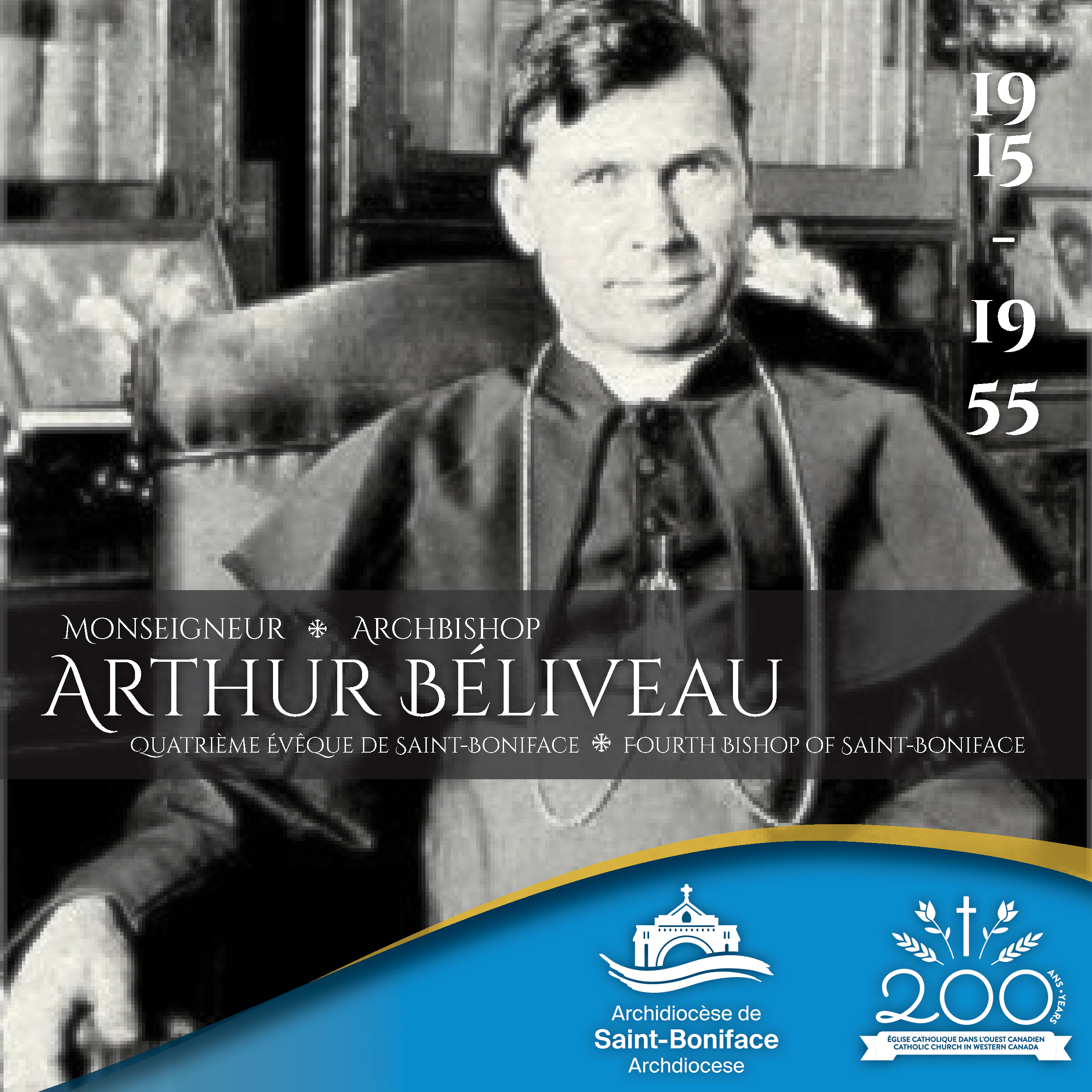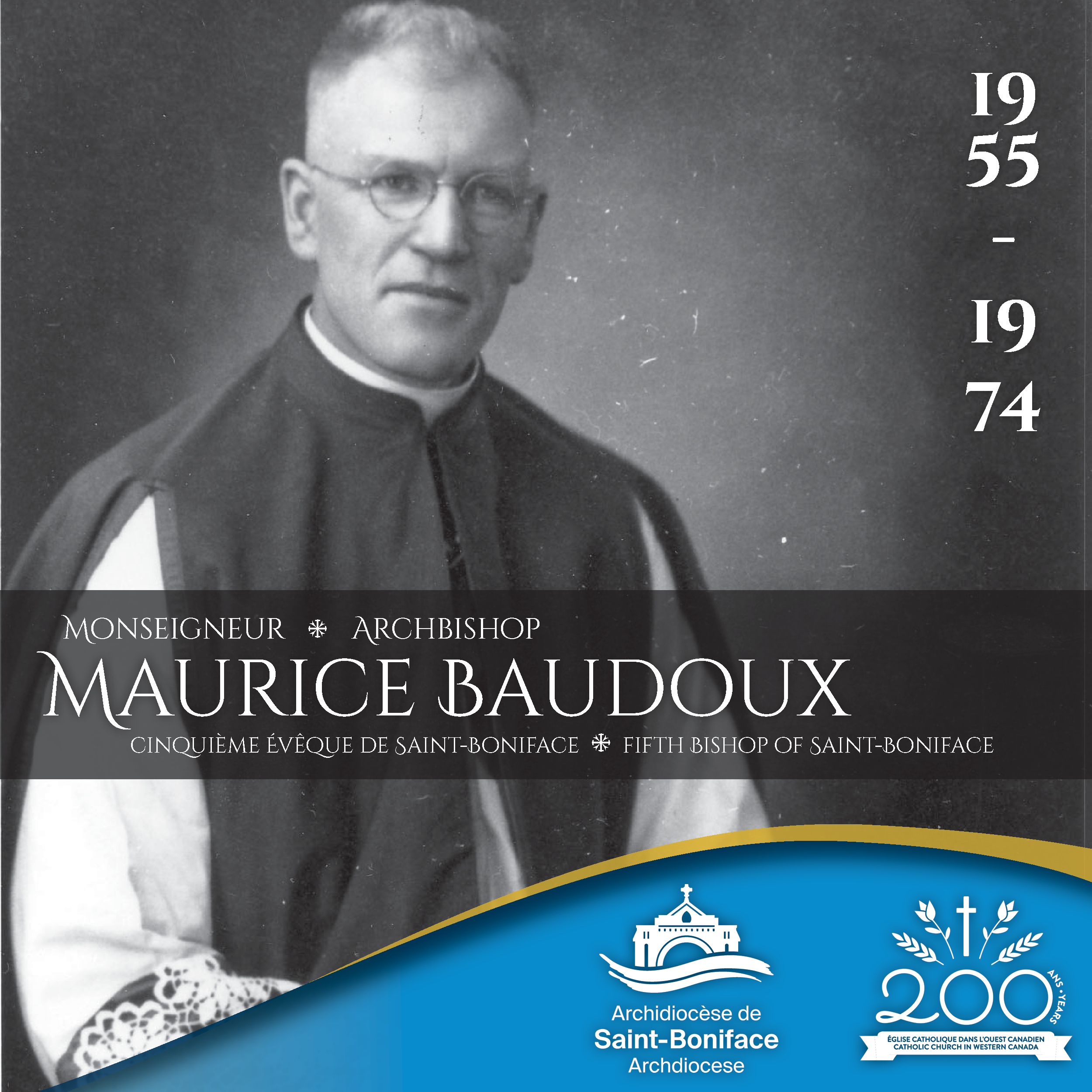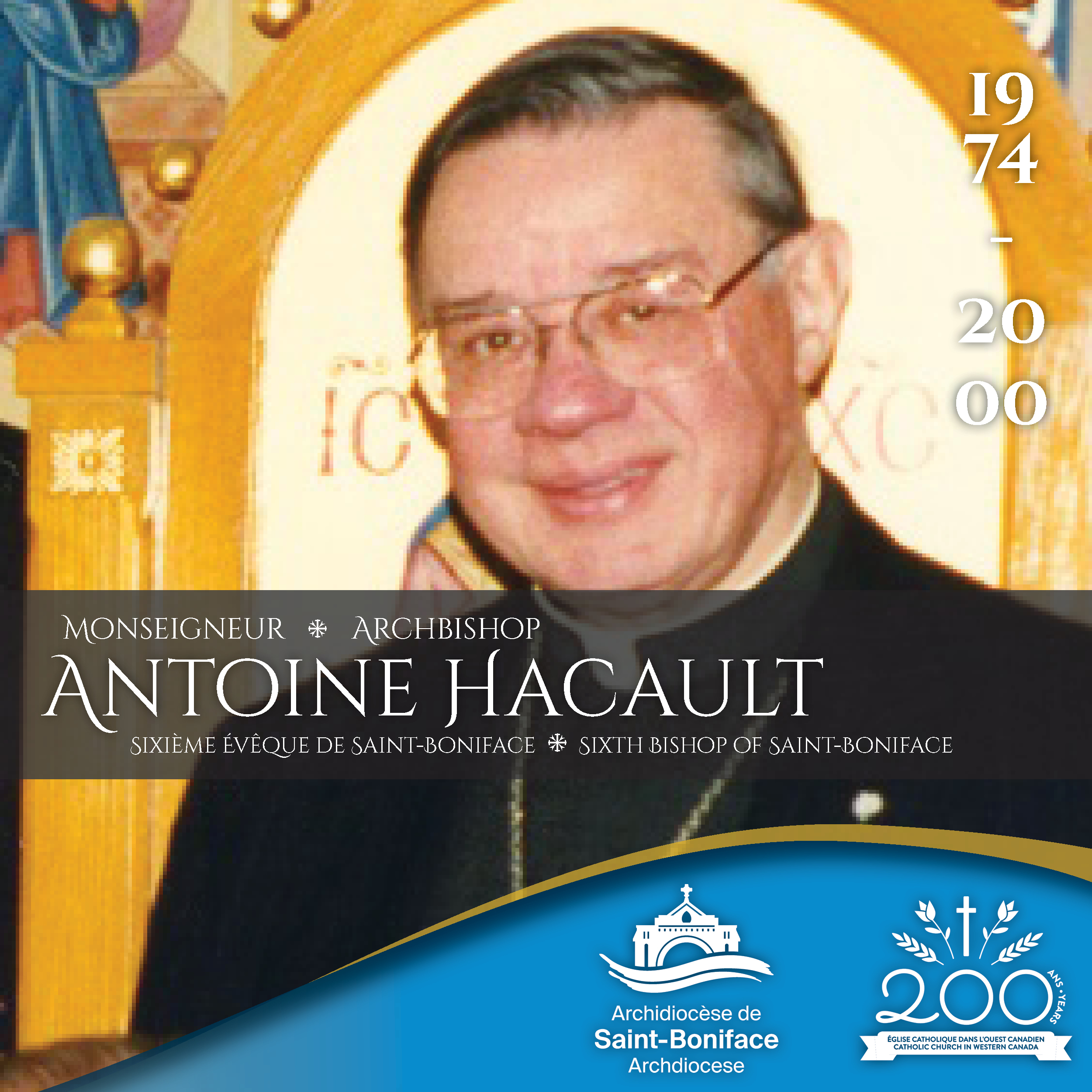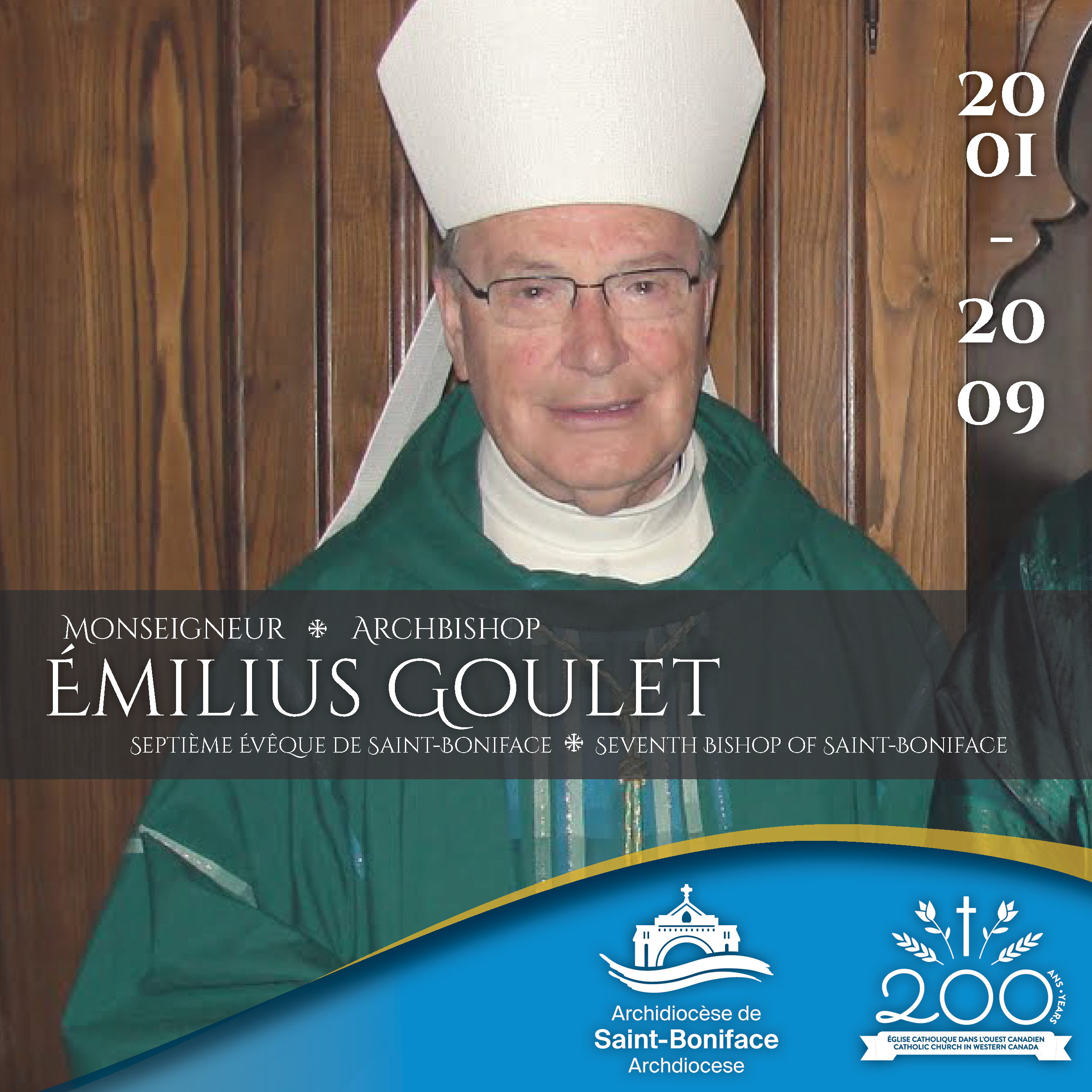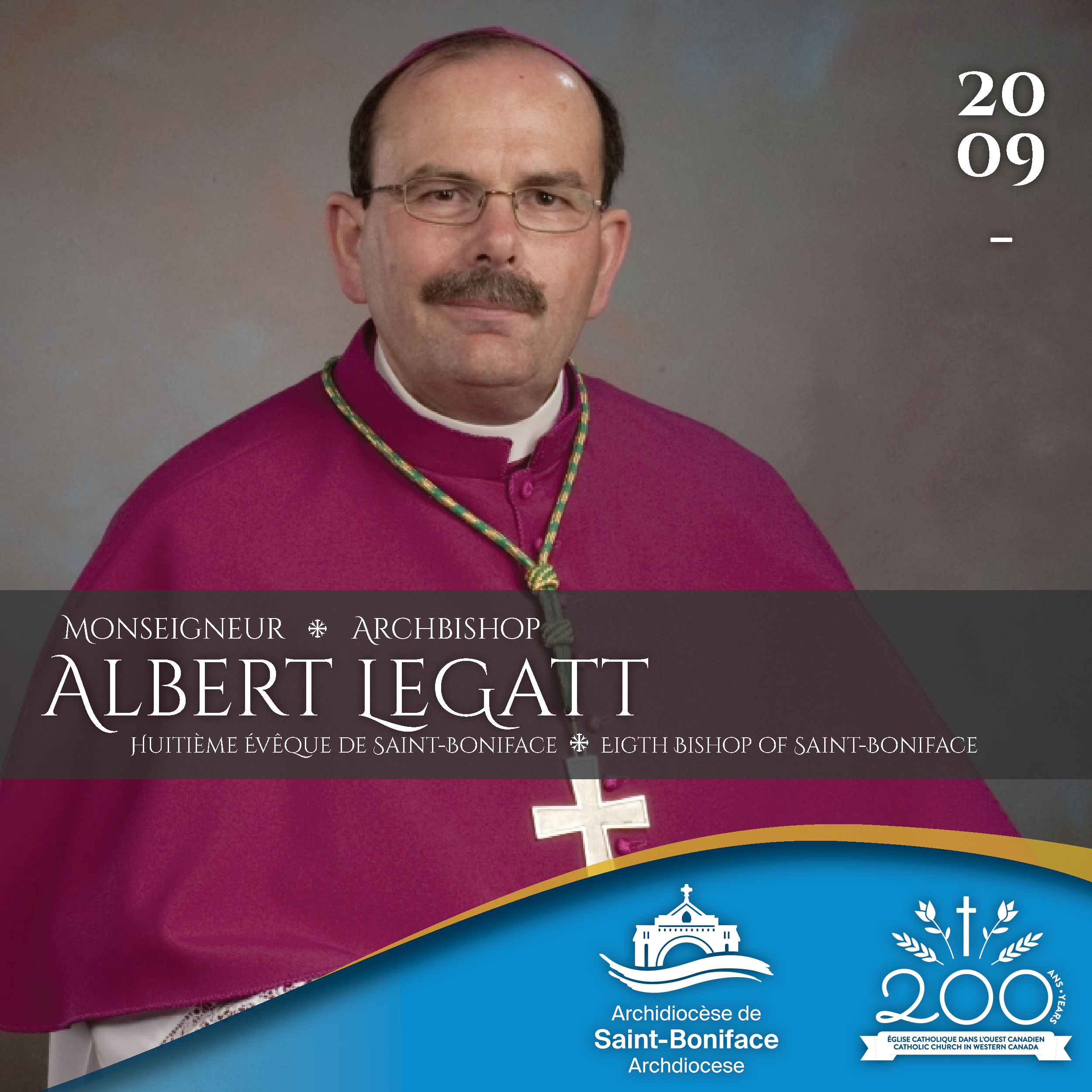Historic Brief - The Bishops & Archbishops of our Diocese
Discover the Bishops & Archbishops of Saint Boniface!
As we celebrate the bicentenary of Catholicism in Western Canada, we wish to highlight the many bishops who have led and formed our Church, and who have helped make it what it is today! You may also follow the bishops’ history on the diocesan Facebook page.
|
Born on February 12, 1787, in Nicolet, QC, Bishop Provencher was ordained in 1811 and was sent to the Red River Settlement (Manitoba) in 1818 to establish the Catholic Church in the Canadian West. Described as a moral, humble, tenacious, and devout man, Bishop Provencher was consecrated titular bishop in 1822 and became the first bishop of the diocese of the Northwest, founded in 1847 in St. Boniface (Manitoba). He died there on June 7, 1853. Bishop Provencher worked tirelessly as ecclesiastic administrator. He built churches and schools to serve the newly arriving Irish, Scottish, and French Canadian Catholic settlers. He sent priests out to the Métis hunters and traders to celebrate their marriages. Bishop Provencher even sent missionaries as far afield as Lake Athabasca and the Pacific Northwest to establish a Catholic presence. During his time as bishop, he made numerous trips to Quebec, and two to the United States and Europe, to garner support for mission development. In total, Bishop Joseph-Norbert Provencher brought with him 13 priests from Quebec and, during the 1840s, he persuaded the Sisters of Charity of the Hôpital Général at Montreal (commonly known as the "Grey Nuns") to establish themselves in the Canadian West. |
Alexandre-Antonin Taché, Oblate missionary, Roman Catholic priest, and bishop, was born in Rivière-du-Loup, QC, on July 23, 1823. He died in St. Boniface on June 22, 1894. He entered the Oblates of Mary Immaculate (OMI) in 1844, and then travelled to the Red River Colony (Manitoba) in 1845. When he arrived here, he was still a seminarian! He was ordained a deacon immediately and a priest on October 12, 1845 by Bishop Norbert Provencher.
After studying the Saulteaux language in St. Boniface, he left for the immense territory of the Île-à-la-Crosse mission (SK) in 1846. He was named coadjutor to Provencher in S. Boniface in 1850 and was consecrated a bishop on November 23, 1851 in Marseille, France, by Eugene de Mazenod, founder of the Missionary Oblates. Taché founded many new missions and helped the large number of settlers who flooded into the region.
Taché was at a Vatican Council when the Red River Rebellion began, and he was called back to Canada by government authorities and helped restore order. He fought vigorously for French and Catholic schools. The bishop left behind him important accomplishments in the country. A devoted missionary and enlightened patriot, he was one of the great Catholic bishops of Canada. |
|
Bishop La Born in Saint-Isidore de Laprairie, Lower Canada, in 1855, Adélard Langevin studied at Le Collège de Montréal and entered the Oblate novitiate in 1881. He made his vows the following year and was ordained to the priesthood. He served as director at the Oblate’s Grand Séminaire at the University of Ottawa, from 1885 to 1893. That year, at Archbishop Taché's request, he left for Western Canada to be put in charge of Oblate institutions and personnel in the St. Boniface Archdiocese. He was ordained bishop in 1895 and succeeded to Archbishop Alexandre-Antonin Taché as head of the ecclesiastical province of St. Boniface which, at the time, extended from Ontario to British Columbia. For the next twenty years, he worked incessantly to preserve Catholic educational rights in the Prairies. He also recruited priests to minister to the needs of Catholics of all rites and nationalities, especially Ruthenians. Over 80 parishes were established during Langevin’s term as archbishop. He also oversaw the construction of the new St. Boniface Basilica (1908). Bishop Langevin also promoted the publication of Catholic newspapers in French, German, Polish, and Ukrainian, including Les Cloches de Saint-Boniface (1902) and La Liberté (1913). It was at his instigation that La Société historique de Saint-Boniface was founded in 1902, and he served as the organization’s first president. Bishop Langevin died in 1915 and was buried in the crypt of the St. Boniface Cathedral.
|
|
Arthur Béliveau was born at Mount Carmel, QC, in 1870. His family moved to Manitoba in 1882. He studied at the Collège Saint-Boniface, and at the Grand Séminaire de Montréal, and was ordained to the priesthood in 1893. He furthered his studies in Rome before returning to Manitoba in 1896, having completed his doctoral studies in theology.
Béliveau then occupied various roles within the Archdiocese of St. Boniface, including secretary to Archbishop Langevin, chancellor and financial administrator. As early as 1909, Archbishop Langevin, whose health was declining, asked that Béliveau be ordained as auxiliary Bishop. However, Béliveau was ordained only in 1913. Bishop Langevin died in 1915, and Béliveau became Archbishop of St. Boniface.
Béliveau was quite preoccupied because there was a great deal of pressure to divide his archdiocese in order to create an archdiocese for English speaking people in Winnipeg. The decision came from Rome. When the boundaries were drawn, the population of St. Boniface Archdiocese was dramatically reduced, as parishes were now divided between two archdioceses. In1916, the government of Manitoba abolished the bilingual school system. Béliveau then initiated the establishment of the Association d'éducation des Canadiens-français du Manitoba (the Association for the Education of French Canadians in Manitoba), and worked hard to maintain French and catholic education in his parishes.
In 1922, a fire completely destroyed the Collège Saint-Boniface, so Bishop Béliveau then ceded the Minor Seminary, which became le Collège de Saint-Boniface (now known as l’Université Saint-Boniface). During the 1929 financial crisis, he supported economic diversification in rural parishes and encouraged agricultural farmers not to leave their farms. Thanks to his skills in writing and public speaking, he wrote many articles for the local La Liberté newspaper, to promote life in rural areas. Béliveau also encouraged lay participation in the Church through his 'Action catholique' movement. In 1931, he suffered a ruptured aneurysm, and until his death in 1955, three coadjutor bishops served the Archdiocese: Émile Yelle, Georges Cabana and Maurice Baudoux. |
|
Bishop Baudoux, 5th bishop, 4th archbishop
Maurice Baudoux was born in La Louvière, Belgium. He and his family immigrated to Canada when he was 9 years of age. He then studied at the Collège de Saint-Boniface. He followed with seminary studies in Edmonton, and then attended Laval University in Québec city where he obtained his diploma in theology.
Maurice Baudoux was ordained to the priesthood in 1929 in his francophone village of Prud'homme, SK. In 1948, he was named first bishop of the new diocese of Saint-Paul, AB. On March 4th, 1952, he became coadjutor of bishop Béliveau in the Archdiocese of St. Boniface, and on September 14, 1955, he became Archbishop of Saint-Boniface, an office he held until his retirement in 1974, due to his failing health. He was a member of all four sessions of the 2nd Vatican Council from 1962 to 1965.
In 1979, Baudoux was inducted into the Order of Canada, in recognition of his important work with francophone communities in the West, through his collaboration with francophone school divisions and his presentations on the French radio of Radio-Canada. In 1980, he received an Honorary Doctorate from the University of Saskatchewan. In 1984, he was inducted into the Order of Francophones of North America.
After a long illness, Bishop Baudoux passed away in St. Boniface in 1988. |
|
Born in Brussells, MB, in 1926, he was ordained to the priesthood on May 20 1951, holding thereafter many positions within the Archdiocese of St. Boniface. In 1962 he was appointed as a member of the Second Vatican Council. In 1964, Hacault became Auxiliary Bishop of St-Boniface and was later named as Coadjutor Archbishop in 1972. Finally, Archbishop Baudoux’s failing health moved him to resign, Antoine Hacault became Archbishop of St. Boniface on September 7, 1974.
Beloved by many, Hacault worked extensively with the Canadian Conference of Catholic Bishops (CCCB), as a member of the Pastoral Team, the Commission for Missions, the Commissions for Ecumenism and Non-Believers, and many other commissions. Hacault also held positions at the regional and provincial levels, as well as at the Roman Curia. He was awarded an honorary doctorate by the University of Manitoba in 1989. He died in St. Boniface on April 13, 2000. |
|
As we celebrate the bicentenary of Catholicism in Western Canada, we would like to highlight the many bishops who have lead and formed our local Church, and who have helped make it what it is today! We now look at Archbishop Émilius Goulet, seventh bishop of St. Boniface.
Born on May 15, 1933 in the village of St-Isidore-de-Dorchester (QC), into a farming family of 13 children, he received his primary education in his local parish. He completed his classical studies at the Seminary of Ste-Anne-de-la-Pocatière, (QC), and completed his theology studies at the Major Seminary of St. Boniface. Ordained a priest in his home parish for the Archdiocese of St. Boniface by Bishop Baudoux in 1958, he taught Latin at the College de Montreal in 1958-1959 while attending the University of Montreal in order to obtain a license in theology (1959) and complete his doctoral studies (1959-1960). He joined the Society of the Priests of Saint-Sulpice in 1960.
Appointed professor of Scripture and Liturgy at the Major Seminary of St. Boniface (1963-1967), he also devoted himself to the permanent education of clergy and religious communities. Then he was assigned, from 1967 to 1970, at the Major Seminary of Guatemala as professor of Scripture and Liturgy, and from there he went to the Major Seminary of Manizales in Colombia as Rector and professor of Scripture.
He was ordained archbishop on September 16, 2001, at the Cathedral of St. Boniface. A polyglot, he speaks French, English, Italian, Spanish, German and Portuguese. He resides today in Montréal at the Sulpician residence at Notre-Dame Basilica.
|
|
As we celebrate the bicentenary of Catholicism in Western Canada, we would like to highlight the many bishops who have lead and formed our Church, and who have helped make it what it is today! Now, we look at Archbishop Albert LeGatt, the eighth and current bishop of St. Boniface.
Albert LeGatt was born on May 6, 1953 in Melfort, SK, to Joseph and Emma LeGatt and attended school at St. Brieux (1959-1967) and at Le Collège Notre Dame, St. Louis, SK (1967-1971). He studied at Le Collège de Saint-Boniface (University of Manitoba) obtaining a Bachelor of Arts (with majors in Philosophy and French) in 1974.
For the next three years, he served as a CUSO (Canadian University Services Overseas) volunteer in Ghana, Africa, where he taught French in a secondary school.
He entered Le Grand Séminaire de Québec in 1977 pursuing studies in theology at l’Université Laval. He was ordained to the priesthood on June 19, 1983 by Bishop Blaise Morand in St. Brieux, SK. He served as assistant pastor, then pastor in a number of parishes in Prince Albert (1983-2000).
He pursued his studies in Pastoral Liturgy at the University of Notre Dame, Southbend, Indiana, USA (2000-2001). He was involved in the Diocese of Prince Albert as coordinator of the Diocesan Liturgical Commission, director of Vocations and Consultor.
He was named Bishop of the Diocese of Saskatoon on July 26, 2001 by Pope John Paul II and ordained on October 5, 2001 in St. Patrick’s Church, Saskatoon, by Bishop Blaise Morand. He has served on the Catholic Aboriginal Council and the Episcopal Commission for Liturgy of the Canadian Conference of Catholic Bishops. He serves presently on the Episcopal Commission for Catechesis.
On July 3, 2009, he was appointed Archbishop of the Archdiocese of St. Boniface, Manitoba. |
- JUBILATION
Sunday, July 15, 2018 (view videos)

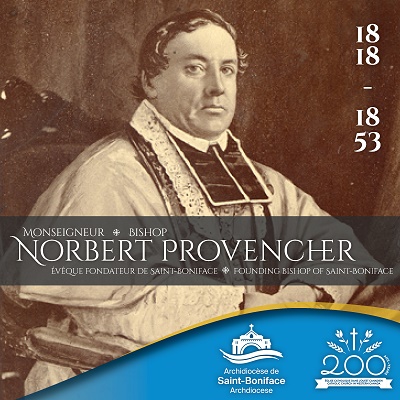
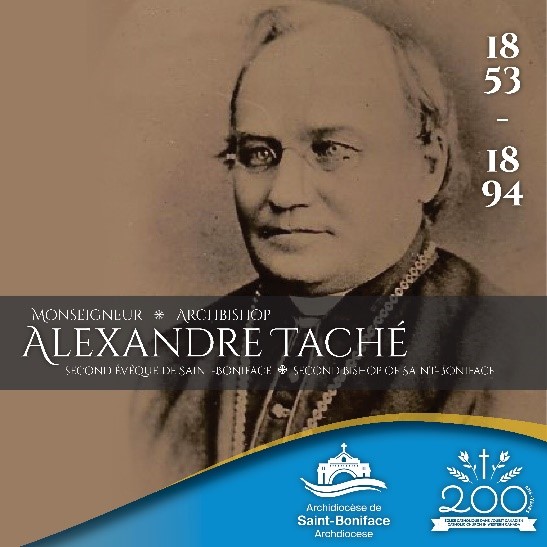
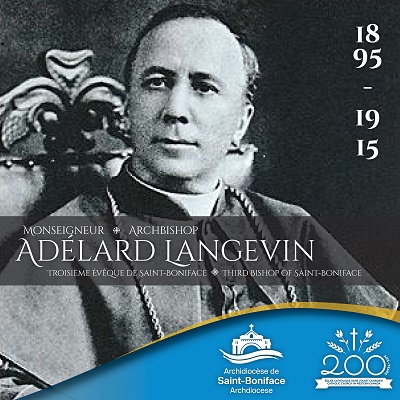 ngevin, 3rd bishop, 2nd archbishop
ngevin, 3rd bishop, 2nd archbishop